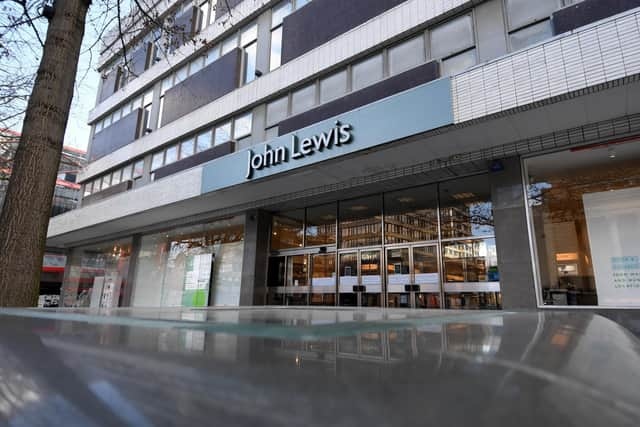If John Lewis is in trouble then that should ring alarm bells for the High Street - Jayne Dowle
“Nothing unpleasant could ever happen there,” he said, and he was probably right.
These days however, something quite disturbing is happening across the whole John Lewis empire, with Peter Jones, in Sloane Square, London, remaining one of the flagship members of the John Lewis ‘family’, which also includes Waitrose supermarkets.
Advertisement
Hide AdAdvertisement
Hide AdSince the closure of John Lewis in Sheffield in 2021, a move which brought tough Sheffielders to tears, there is only one branch in Yorkshire, and that’s in Leeds.


Given the perilous situation of many of our regional town centres and High Streets, you might wonder why the fate of a department store chain which doesn’t touch the lives of many of us should be of interest or importance?
I’d argue that if John Lewis is in trouble, its fate is sounding a massive alarm bell. Above all, it has long been an unimpeachable British brand, and in a world dominated by global economics and cheap imports, everything possible should be done to cherish, celebrate and cement its stellar position in the retail firmament.
Last year, the chain made a pre-tax loss of £234m, and there have been rumours – since scotched – that the company was considering ditching its famous, and unique mutual ownership model, which gives all employees a share in the business. This would have allowed for financial restructuring, bringing in a minority shareholder to shore up the business whilst the chairwoman, former senior civil servant Dame Sharon White, deals with the challenges brought about by the current economic climate.
Advertisement
Hide AdAdvertisement
Hide AdMeanwhile for only the second time since 1953, staff have not received their annual bonus.
Lean times were already stalking the halls; the Sheffield closure was part of a huge post-pandemic cost-cutting exercise, when one in three of the then 51 John Lewis stores pulled down their shutters for the final time, and staff numbers were cut by about 4,000 to 74,000.
It is very tempting to fall for the commonly-held trope; the bricks and mortar department store is dead, long live the limitless department store of Amazon and internet shopping.
This was particularly highlighted during pandemic lockdowns, when it wasn’t even possible for months at a time to go shopping in any kind of normal way.
Advertisement
Hide AdAdvertisement
Hide AdHowever, it’s certainly true that now life has returned to what passes for ‘normal’, vibrancy has also returned to our real-life shopping thoroughfares.
And the canny brands are cashing in on this. Marks & Spencer is a good example. Another iconic British ‘name’, it’s been written off so many times, but of late, has turned around its fortunes by focussing on what it does best; old reliables such as decent underwear, and food, of course.
I think the problem at John Lewis is lack of confidence. Under previous leaderships, before Dame Sharon White arrived in 2020, it had diversified into trying to offer everything to everybody. Travel agency and spa treatments, pet insurance and Junior ISAs? Nice to have, but certainly not essential.
Drill down into what you do best should be the core principle of any High Street store planning to still be here in 20 years’ time. Speaking of the future, it’s tempting to imagine the typical John Lewis (or Waitrose) customer as middle-aged, middle-class, middle England.
Advertisement
Hide AdAdvertisement
Hide AdYet it should know that younger shoppers recognise quality when they see it. And they are also obsessed by the cachet of brands. Two definite things to focus on.
Perhaps burned one too many times by buying cheap stuff off the internet that doesn’t last two minutes, they are beginning to think carefully before parting with their hard-earned cash.
Shopping with my teenage daughter in Meadowhall recently, she needed to update a few basics. Rather than Primark or one of the trendy boutiques, she asked if we could pop into M&S. I have to admit I was taken aback, but pleased at the same time.
There is hope, and John Lewis would be wrong to lose sight of it. In an uncertain world, we tend to lean towards what we know. There are armies of trend-forecasters who must surely be able to offer reliable insight on how to make the right decisions on how to invest in fashion, homewares, electrical goods and baby items, just four of the areas where John Lewis always excelled.